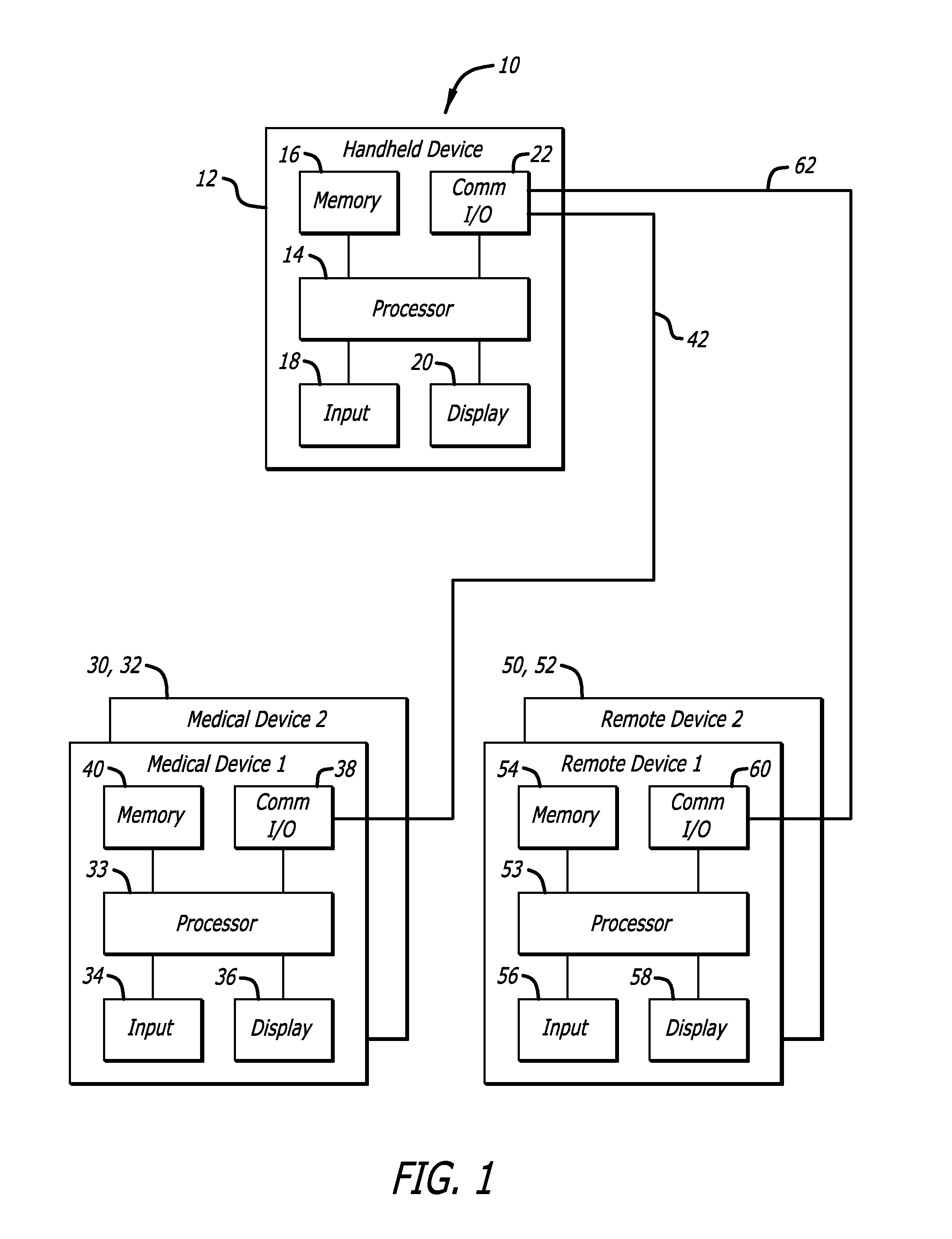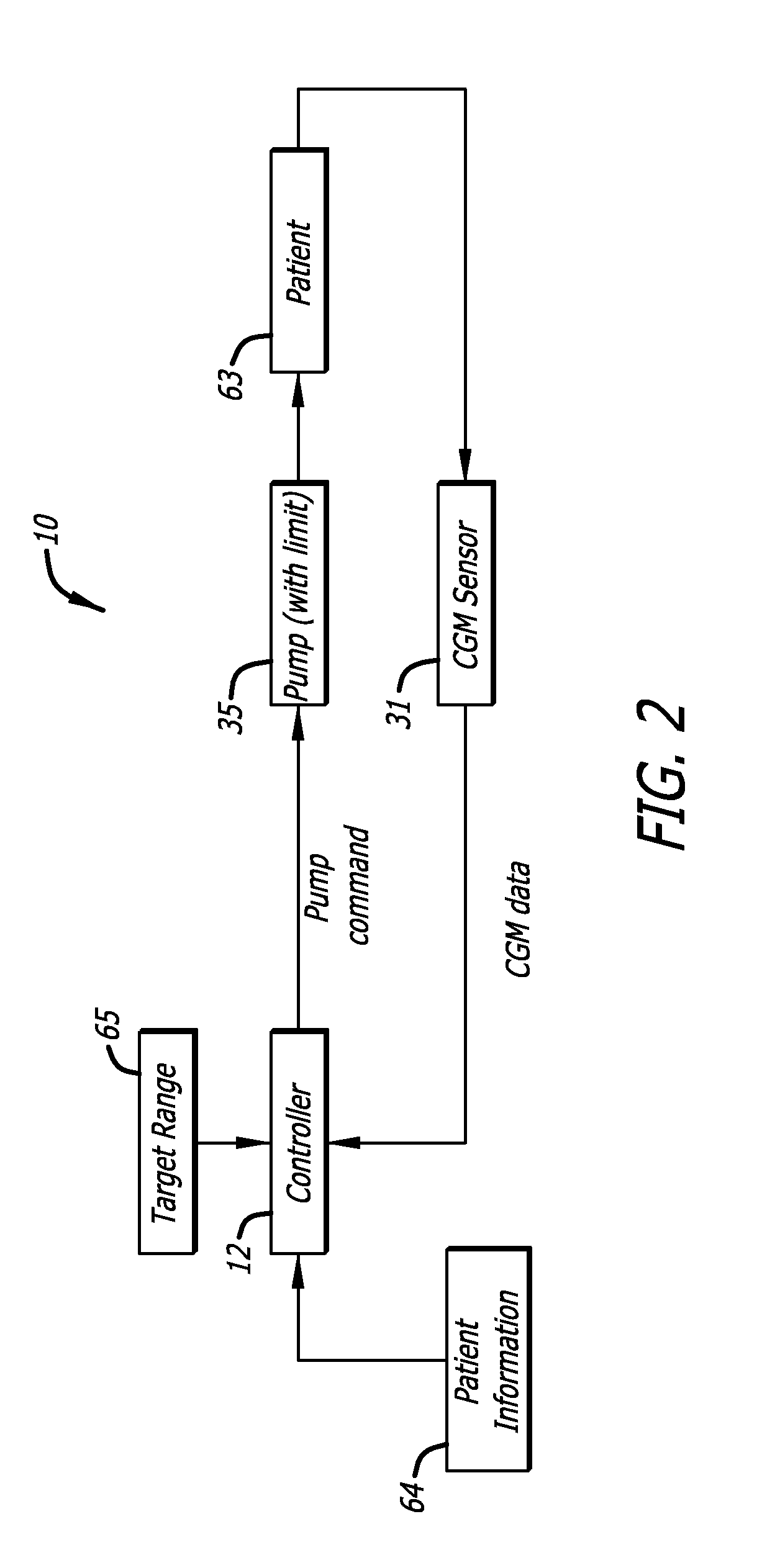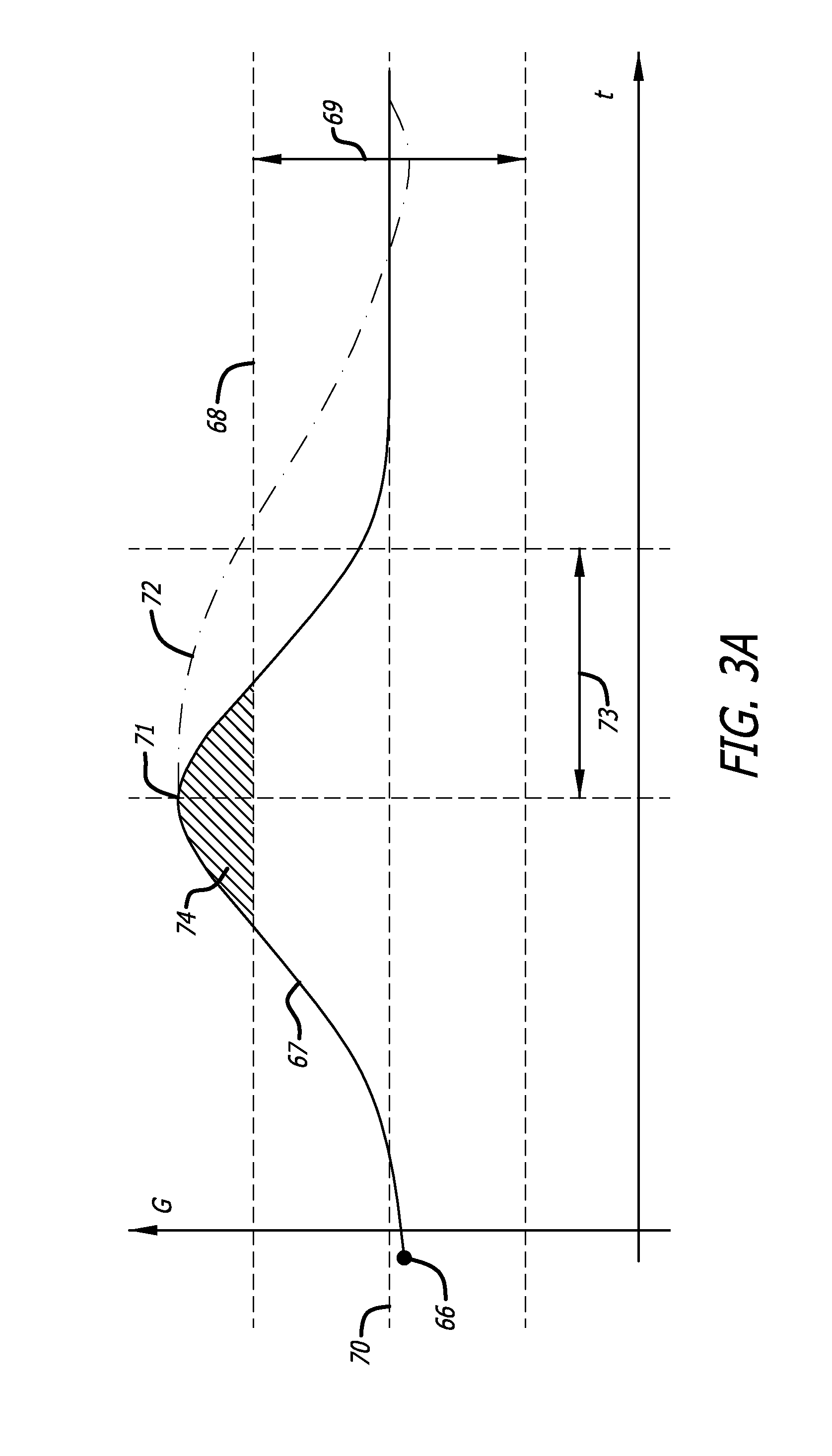Adaptive insulin delivery system
a technology of insulin delivery system and insulin injection, which is applied in the field of system and method of controlling the delivery of medication, can solve the problems of user's glucose rising to a level outside the safe range, the inability of the body to properly utilize and metabolize carbohydrates, and the significant change in the level of glucose of that person, so as to achieve the effect of high likelihood of a hypoglycemic even
- Summary
- Abstract
- Description
- Claims
- Application Information
AI Technical Summary
Benefits of technology
Problems solved by technology
Method used
Image
Examples
case a
[0106) OK state;
[0107]Case B) Carb Deficit State;
case c
[0108) Insulin Deficit state (as described above).
[0109]It is also possible that the user could be in a carbohydrate deficit state already, with the peak detection and avoidance analysis. In one embodiment, system 10 incorporates the Carb Ratio (for example, IU) to facilitate future basal insulin reduction if user is in B) Carb Deficit State.
[0110]For example, using the same user setting as earlier:[0111]Current CGM: 230 mg / dL[0112]Current IOB: 3.1 units
The above calculation shows that in five hours, the user's glucose will lower by 155 mg / dL (IOB*ISF) and be around 75 mg / dL. This is way below the target, and close to the low alarm, so this state is categorized as a Carb Deficit State. In some aspects, this is the result of over-dosing of insulin in response to an earlier meal. In some aspects, this situation might not trigger a low alarm within five hours.
[0113]In one embodiment, once the device knows that the user is in carbohydrate-deficit state, the system displays the following...
PUM
 Login to View More
Login to View More Abstract
Description
Claims
Application Information
 Login to View More
Login to View More - R&D
- Intellectual Property
- Life Sciences
- Materials
- Tech Scout
- Unparalleled Data Quality
- Higher Quality Content
- 60% Fewer Hallucinations
Browse by: Latest US Patents, China's latest patents, Technical Efficacy Thesaurus, Application Domain, Technology Topic, Popular Technical Reports.
© 2025 PatSnap. All rights reserved.Legal|Privacy policy|Modern Slavery Act Transparency Statement|Sitemap|About US| Contact US: help@patsnap.com



